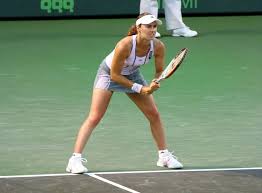In an era dominated by raw power and explosive athleticism, Martina Hingis rewrote the script of women’s tennis with something different precision, intelligence, and pure court craft. Dubbed the “Swiss Miss,” she became not only the youngest Grand Slam champion of the Open Era but also one of the most cerebral players the sport has ever seen.A Child Prodigy on a Global StageBorn in Slovakia and raised in Switzerland, Hingis picked up a racquet at just two years old, guided by her mother and coach, Melanie Molitor. By the age of 12, she had already won the junior French Open. But that was just the beginning. At 16, she won the 1997 Australian Open, becoming the youngest Grand Slam singles champion in the 20th century.From 1997 to 1999, she ruled the game. She became World No. 1 at just 16 and held that position for 209 weeks during her career one of the longest reigns in tennis history. But it wasn’t just her youth that made headlines. It was how she played.The Power of PrecisionUnlike many of her contemporaries who relied on big serves and heavy groundstrokes, Hingis was a master tactician. She read the game like a grandmaster reads chess. Her ability to anticipate, her razor-sharp timing, and her extraordinary touch at the net made her nearly untouchable during her peak.She wasn’t the strongest, but she was always the smartest player on the court.This strategic, finesse-based style made her a throwback to an earlier era of tennis while simultaneously pushing the modern game forward. Her success proved that intellect and anticipation could match even beat brute force.Triumphs, Setbacks, and ReinventionHingis won five Grand Slam singles titles and 13 Grand Slam doubles titles in a career that unfolded in two distinct acts. Injuries forced her into early retirement at just 22, a shocking exit for someone who had once seemed unstoppable. But she wasn’t finished.She returned to the tour twice first in 2006 and again in 2013, focusing largely on doubles. Her comeback was nothing short of remarkable. Teaming up with top players, she claimed numerous doubles and mixed doubles titles, adding depth and longevity to her legacy.Hingis retired for the final time in 2017, having won 25 major titles in singles, doubles, and mixed doubles. Her career was proof that reinvention is possible not just once, but again and again.A Legacy of Tennis IntelligenceMartina Hingis didn’t just win matches she challenged how people thought about winning. In a sport that was beginning to lean heavily toward physicality, she reminded the world of the power of strategy, balance, and brain-over-brawn.Her influence lives on in today’s all-court players those who use variety, angles, and wit to dismantle their opponents. Players like Iga Świątek and Ashleigh Barty owe something to the trail Hingis blazed.She wasn’t the biggest or the strongest. She was simply brilliant and that brilliance changed the game.

